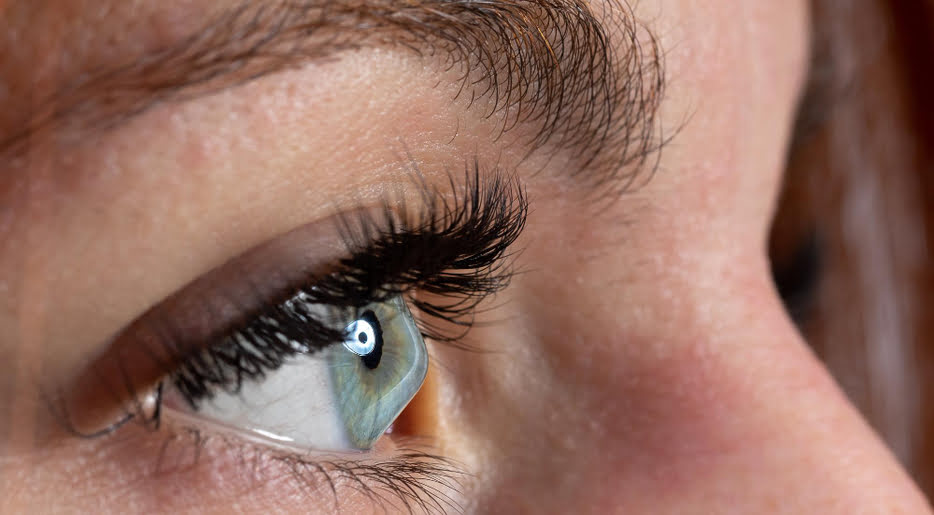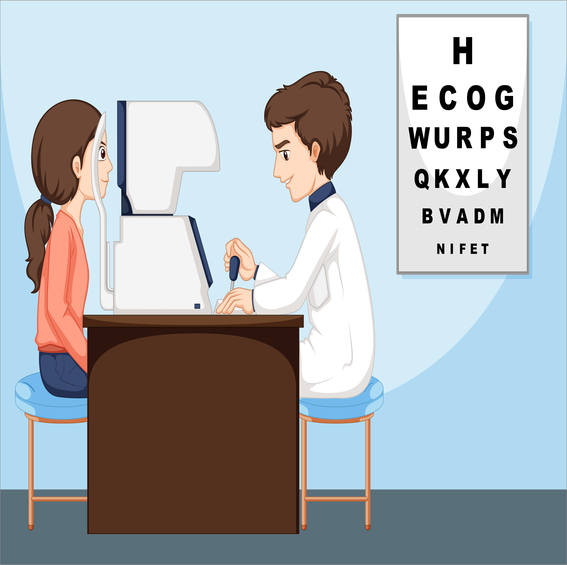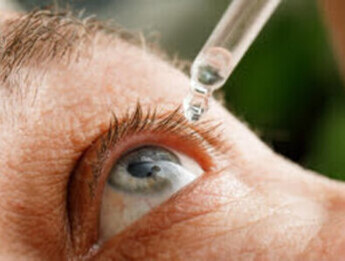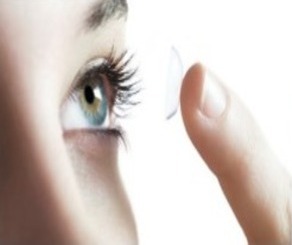CORNEA
Ophthalmic Corneal disease refers to a range of medical conditions that affect the cornea, which is the transparent front part of the eye that covers the iris, pupil, and anterior chamber. The cornea plays a crucial role in focusing light onto the retina, contributing significantly to vision clarity

Various diseases can impact the cornea, leading to visual impairment and
discomfort Some common ophthalmic corneal diseases include:
1. Corneal Abrasions: Superficial scratches on the cornea caused by trauma, foreign objects, or contact lens misuse.
2. Keratitis: Inflammation of the cornea, often due to infections (bacterial, viral, or fungal) or non-infectious factors like dry eyes or extended contact lens wear.
3. Corneal Ulcers: Open sores on the cornea, usually resulting from an infection or severe inflammation.
4. Corneal Dystrophies Inherited disorders leading to abnormal changes in the cornea's structure, potentially affecting vision.
5. Keratoconus: A progressive condition where the cornea thins and gradually bulges outward, causing distorted vision.
6. Corneal Edema: Swelling of the cornea due to fluid accumulation, often associated with conditions like Fuchs' dystrophy.
7. Corneal Transplant Rejection: A potential complication following a corneal transplant, where the recipient's immune system attacks the donor cornea.
Symptoms of ophthalmic corneal disease may include blurred vision, pain, redness, light sensitivity, and tearing. Timely diagnosis and appropriate treatment, which may involve medications, eye drops, or in severe cases, surgery, are crucial to manage these conditions and preserve vision.
Regular eye exams and prompt attention to any signs of discomfort or vision changes are essential for maintaining overall eye health and preventing the progression of ophthalmic corneal diseases.
Ophthalmic Corneal disease refers to a variety of medical conditions that affect the cornea, which is the transparent front part of the eye that covers the iris, pupil, and anterior chamber. The cornea plays a crucial role in focusing light onto the retina and maintaining the eye's structural integrity. Conditions that affect the cornea can lead to visual impairment and discomfort.
There are several types of ophthalmic corneal diseases, including:
1. Corneal Infections: Bacterial, viral, or fungal infections can lead to inflammation and damage to the cornea. These infections may result from injuries, contact lens use, or exposure to harmful microorganisms.
2. Corneal Dystrophies: These are genetic disorders that cause progressive changes to the cornea's structure, leading to visual disturbances. Examples include Fuchs' dystrophy and keratoconus.
3. Corneal Abrasions and Ulcers: Scratches or injuries to the cornea can cause abrasions, while deeper damage may result in corneal ulcers. These conditions can be painful and may increase the risk of infection.
4. Corneal Degenerations: These are non-inflammatory changes in the cornea that may affect its clarity and shape. One example is pterygium, a growth of tissue on the cornea's surface.
5. Corneal Scarring: Injuries, infections, or certain surgeries can lead to scarring of the cornea, impacting its transparency and causing visual impairment.
The symptoms of ophthalmic corneal diseases may include pain, redness, blurred vision, sensitivity to light, and excessive tearing. Treatment options vary depending on the specific condition but may involve medications, such as antibiotics or anti-inflammatory drugs, and in some cases, surgical interventions like corneal transplant.
Regular eye examinations are crucial for early detection and management of ophthalmic corneal diseases. Timely intervention can help preserve vision and alleviate symptoms associated with these conditions. If you experience any changes in your vision or eye health, it's important to consult with an eye care professional for a comprehensive evaluation and appropriate care.
Symtoms of Corneal disease :
The symptoms of corneal disease can vary depending on the specific condition affecting the cornea. However, some common symptoms associated with various corneal diseases include:
1. Pain or Discomfort: Many corneal conditions can cause pain or a feeling of discomfort in the affected eye. This can range from mild irritation to severe pain.
2. Redness: Inflammation of the cornea often leads to redness in the eyes. This may be accompanied by bloodshot or irritated eyes.
3. Blurred or Distorted Vision: Changes in the cornea's shape or transparency can result in blurred or distorted vision. This may affect your ability to see clearly both up close and at a distance.
4. Sensitivity to Light (Photophobia): Increased sensitivity to light is a common symptom of corneal diseases. Bright lights may cause discomfort or pain.
5. Tearing or Watery Eyes: Irritation of the cornea can stimulate excessive tearing as the eye attempts to flush out irritants or protect itself.
6. Foreign Body Sensation: Some individuals with corneal diseases may experience a feeling of having a foreign object, like dust or sand, in their eye.
7. Itching or Burning Sensation: Corneal conditions may cause itching or a burning sensation in the eyes, contributing to overall discomfort.
8. Decreased Vision in Low Light: Certain corneal diseases can result in reduced vision, especially in low-light conditions.
9. Eye Discharge : Eye Discharge Infections or inflammatory conditions of the cornea may lead to the production of discharge from the eyes.
10. Excessive Tearing: Corneal diseases can sometimes stimulate the production of excess tears, leading to watery eyes.
It's important to note that the specific symptoms can vary based on the underlying cause of the corneal disease, such as infections, injuries, dystrophies, or degenerations. If you experience any persistent changes in your vision or eye health, it's crucial to seek prompt evaluation by an eye care professional for an accurate diagnosis and appropriate treatment. Early detection and intervention can help manage corneal diseases more effectively and prevent potential complications.
Symtoms of Corneal disease :
The treatment options for corneal diseases depend on the specific condition, its severity, and the underlying cause. Here are some general treatment approaches for common corneal diseases:
1. Medications
- Antibiotics: If the corneal disease is caused by a bacterial infection, topical or oral antibiotics may be prescribed.
-Antivirals or Antifungals: For viral or fungal infections, antiviral or antifungal medications may be used.
- Anti-inflammatory Drugs: Corticosteroid eye drops or other anti-inflammatory medications may be prescribed to reduce inflammation and alleviate symptoms.
2. Artificial Tears and Lubricating Eye Drops:
- Lubricating eye drops can help relieve dryness and provide comfort in conditions where the cornea is not adequately lubricated.
3. Contact Lenses:
- Specialty contact lenses, such as rigid gas permeable lenses, may be recommended for certain corneal conditions, like keratoconus, to improve vision.
4. Corneal Cross-Linking:
- This is a procedure used to treat progressive keratoconus. It involves the application of riboflavin (vitamin B2) eye drops followed by exposure to ultraviolet light to strengthen the cornea.
5. Corneal Transplant (Keratoplasty):
- In cases of severe corneal damage or disease that cannot be effectively treated with medications or other procedures, a corneal transplant may be considered. During a transplant, the damaged cornea is replaced with a healthy donor cornea.
6. Topical Steroids:
- Steroid eye drops may be prescribed to reduce inflammation in conditions such as corneal dystrophies or immune-mediated disorders.
7. Surgical Procedures:
- Various surgical procedures may be employed, depending on the nature of the corneal disease. These may include pterygium excision, debridement of corneal ulcers, or procedures to repair corneal injuries.
8. Management of Underlying Conditions:
- Treating any underlying systemic conditions, such as autoimmune disorders or diabetes, is essential for managing certain corneal diseases.
It's important for individuals experiencing symptoms of a corneal disease to seek prompt medical attention from an eye care professional. Early diagnosis and appropriate treatment are crucial for preserving vision and preventing complications. The specific treatment plan will be tailored to the individual's condition after a thorough eye examination and evaluation of the underlying cause.
The treatment options for corneal diseases depend on the specific condition and its underlying cause. Here are some general approaches and
interventions that may be used to manage various corneal diseases:
1. Medications:
-Antibiotics or Antifungals: If the corneal disease is caused by an infection, such as bacterial or fungal keratitis, topical or systemic medications may be prescribed.
- Anti-inflammatory Drugs: Corticosteroid eye drops or ointments can help reduce inflammation associated with certain corneal conditions.
2. Artificial Tears and Lubricating Eye Drops : Lubricating eye drops can help relieve symptoms of dry eyes, which may accompany some corneal diseases.
3. Contact Lenses: Specialty contact lenses, such as rigid gas permeable (RGP) lenses or scleral lenses, may be prescribed to improve vision and provide comfort in conditions like keratoconus.
4. Corneal Cross-Linking (CXL): This is a procedure used to treat progressive keratoconus by strengthening the cornea and preventing further deformation. It involves the application of riboflavin (vitamin B2) and ultraviolet (UV) light.
5. Corneal Transplant (Keratoplasty): In cases of severe corneal damage or disease, a corneal transplant may be recommended. This involves replacing the damaged corneal tissue with healthy donor tissue.
6. Phototherapeutic Keratectomy (PTK): PTK is a laser-based surgical procedure used to treat certain corneal dystrophies, scars, or irregularities. It removes a precise amount of corneal tissue to improve vision and reduce symptoms.
7. Intacs Inserts: Intacs are small, clear plastic inserts that may be surgically implanted into the cornea to reshape it and improve vision, particularly in cases of keratoconus.
8. Pterygium Excision: Surgical removal of a pterygium may be necessary if the growth interferes with vision or causes significant discomfort.
It's important to note that the choice of treatment depends on the specific diagnosis and the individual patient's circumstances. The eye care professional will conduct a thorough examination, including imaging and diagnostic tests, to determine the most appropriate course of action.
If you suspect you have a corneal disease or experience symptoms like pain, redness, blurred vision, or sensitivity to light, it's crucial to consult an eye care professional promptly for an accurate diagnosis and appropriate treatment. Early intervention can help prevent complications and preserve vision.
Book an appointment
Please fill in the form below and we will soon call you back.



